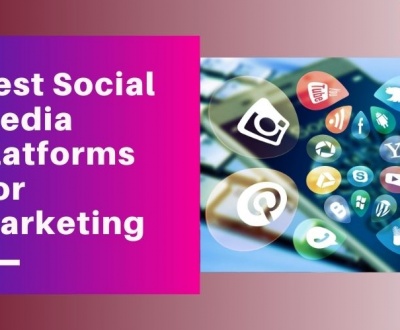3 Key Reasons for Intercultural Content Marketing
- March 3, 2016
- Branding, Public Relations, Social Media
Culture acts as a framework of understanding. A framework that shapes the way we think and the way we interact with others. But as we venture beyond our own cultures, such framework no longer applies.
In the business context, cultural fluency is especially vital to effectively bridge such differences. After all, the essence of content marketing is to convince your audience that the product or service is made for them.
Here at Script Consultants, we’ll explore 3 key reasons to consider intercultural content marketing.
1. High-Context vs Low-Context Cultures
A well-designed copy that caters to the cultural preferences of consumers is akin to a luxurious experience at a 5-star hotel. By showing that you understand the cultural expectations of your target audience, it spurs conversions as it welcomes consumers with content that effectively bridges across cultures.
The founding father of intercultural communication, Edward T. Hall, identified the differences between high-context and low-context communication. This generalized framework sets up a guideline that could give you an advantage in effectively designing your copy to suit the needs of a global audience.

Photo credit: globalview
Let’s take a look at global brand Johnson & Johnson, to understand the key characteristics of low-context culture versus high context culture.
Low-Context
https://www.youtube.com/watch?v=HGm10lc_Va0
Featuring a cute baby taking a bath and playing with bubbles, this commercial features Johnson & Johnson’s baby bubble bath wash as mild and gentle. It reflects the direct approach of American culture as the benefits of the product is explicitly mentioned and there’s no need for any inference from the consumers.
High-context
https://www.youtube.com/watch?v=McXbBjpLLME
In contrast, Johnson&Johnson’s “Born for Love” television campaign utilizes an indirect approach where consumers are heavily dependent on the background information provided to comprehend the underlying message of the ad. By featuring humanitarian aid volunteers and health care professionals as they bring comfort to those in need, it’s an artful manner of communicating Johnson & Johnson’s value “因爱而生” which means “because we care, we act“.
Hence, Johnson & Johnson is committed to contributing to the growth of China by providing quality products and other social efforts to improve the welfare of Chinese families. Although the underlying message require more time to process, the context of the ad spurs an emotional resonance that reflects an Eastern cultural emphasis on the importance of family.
2. Translating colours

Photo credit: Reader’s digest
Are you suffering from the Monday blues? Or so angry that you’re seeing red? Or was offered a job opportunity that you’re tickled pink? Colour is part and parcel of our lives that it shapes the way we describe our moods. And yet different cultures have their own respective interpretation of colour. Ultimately, it’s beneficial to have a comprehensive understanding of the symbolism of different colours in different cultures worldwide.
Let’s take a look at the 3 primary colours:
Red
In Western cultures, red symbolizes love, passion and it’s also a representation of danger. The colour of fire engines, traffic lights and exit signs, red is a vibrant colour that effectively conveys a warning to be alert. Red, it’s also the colour of roses, the colour of love, the colour of the classic lip that could have a little hint of seduction or simply oozes with sexuality.
In Asian cultures, red is a symbol of prosperity. Red packets or “Hong baos” are given during the Lunar New year or during weddings as a means of conveying happiness and good luck.
Conversely, red in South Africa is the colour of mourning.
Yellow
In Western cultures, yellow generally symbolizes optimism. It’s the colour of sunshine, the colour of hope. Contrastingly, yellow is also associated with caution where the police yellow tape cordon off crime scenes. Yellow has negative connotations of a coward and then there’s also “the yellow kid”, an iconic representation of yellow journalism.
In China, for centuries yellow was strictly reserved for the imperial family and even till this day, the colour carries a tint of nobility. Other parts of Asia such as Thailand holds the colour yellow in high regard as it’s the colour representative of Theravada Buddhism.
However, for the Jews, yellow is a symbol of dark times as the yellow star badge of the Middle Ages and during the period of Nazi Germany is a reminder of their suffering.
Blue
In Western cultures, blue is symbol of trust and representative of authority. From police uniforms to surgical scrubs, the soothing nature of blue inspires calmness and a sense of dignity. On the flip side, blue can also be a ‘sad’ colour.
In China, blue signifies the colour of the heavens and it’s associated with immortality. Whereas in Korea, dark blue is the colour of death.
3. Catering to local tastes

Photo credit: travellingmcds
With over 36,000 restaurants in more than 100 countries, global brand Mcdonald’s have a massive range of taste buds to please. By adapting their menu to reflect the unique cultural tastes of each country, Mcdonald’s have won the hearts of millions worldwide.


Photo credits: Dailymail
Want a good balance of Ying and Yang for your meal? You could order a black-bun burger with white sesame seeds or a white-bun burger with black sesame seeds at Mcdonald’s in China, Taiwan and Hong Kong.

Photo credits: vimeo
Looking for a vegetarian option? Fret not, Mcdonald’s got it covered with the McAlooTikkiTM, a potato veggie burger, to cater to the predominately vegetarian population in India.
Ultimately, it’s partly about respecting cultural differences and your content marketing efforts are bound to be well-received.
Written by: (www.script.com.sg) Edited & Illustrated by: Script Consultants Pte Ltd
About us and this blog
We are a digital marketing company with a focus on helping our customers achieve great results across several key areas.
Request a free quote
We offer professional SEO services that help websites increase their organic search score drastically in order to compete for the highest rankings even when it comes to highly competitive keywords.
Subscribe to our newsletter!
More from our blog
See all postsLeave a Comment cancel
This site uses Akismet to reduce spam. Learn how your comment data is processed.











Hi there, thanks for giving these 3 key reasons for intercultural content marketing. I have been following your blogs and I must say that you write in a pretty amazing tone.
Thanks! We have a lot more resources on our website. Please feel free to browse or get in touch with us at enquiry@script.com.sg.